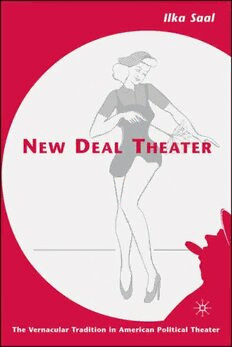
New Deal Theater: The Vernacular Tradition in American Political Theater PDF
243 Pages·2007·0.634 MB·English
Most books are stored in the elastic cloud where traffic is expensive. For this reason, we have a limit on daily download.
Preview New Deal Theater: The Vernacular Tradition in American Political Theater
Description:
New Deal Theater recovers a much ignored model of political theater for cultural criticism. While considered to be less radical in its aesthetics and politics than its celebrated Weimar and Soviet cousins, it nonetheless proved to be highly effective in asserting cultural critique. In this regard it offers a vital alternative to the dominant modernist paradigm developed in Europe. Rather than radicalizing content and form, New Deal theater insisted that the political had to be made commensurable with the language of a mass audience steeped in consumer culture. The resulting vernacular praxis emphasized empathy over alienation, verisimilitude over abstraction. By examining the cultural vectors that shaped this theater, Saal shows why it was more successful on the American stage than its European counterpart and develops a theory of vernacular political theater which can help us think of the political in art in other than modernist terms.
See more
The list of books you might like
Most books are stored in the elastic cloud where traffic is expensive. For this reason, we have a limit on daily download.
